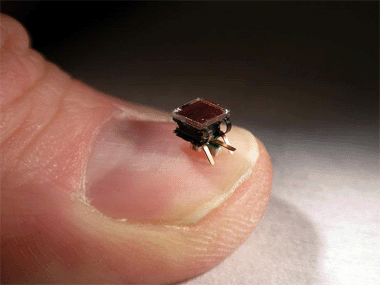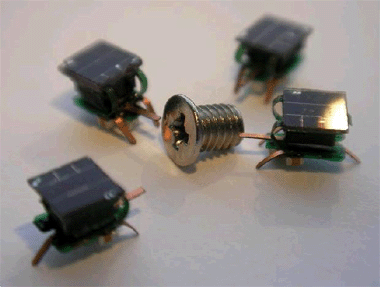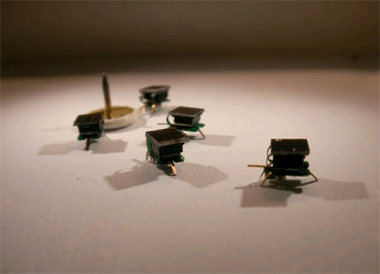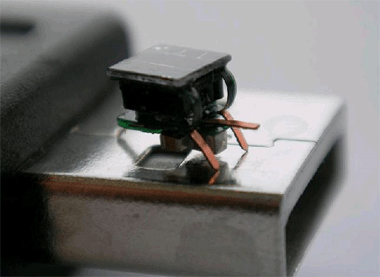
The researchers, from institutes in Sweden, Spain, Germany, Italy, and Switzerland, explain that their building approach marks a new paradigm of robot development in microrobotics. The technique involves integrating an entire robot – with communication, locomotion, energy storage, and electronics – in different modules on a single circuit board. In the past, the single-chip robot concept has presented significant limitations in design and manufacturing. However, instead of using solder to mount electrical components on a printed circuit board as in the conventional method, the researchers use conductive adhesive to attach the components to a double-sided flexible printed circuit board using surface mount technology. The circuit board is then folded to create a three-dimensional robot.

The resulting robots are very small, with their length, width, and height each measuring less than 4 mm. The robots are powered by a solar cell on top, and move by three vibrating legs. A fourth vibrating leg is used as a touch sensor. As the researchers explain, a single microrobot by itself is a physically simple individual. But many robots communicating with each other using infrared sensors and interacting with their environment can form a group that is capable of establishing swarm intelligence to generate more complex behavior. The framework for this project, called I-SWARM (intelligent small-world autonomous robots for micro-manipulation) is inspired by the behavior of biological insects.
via Physorg


